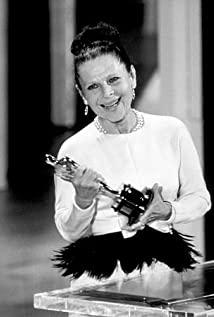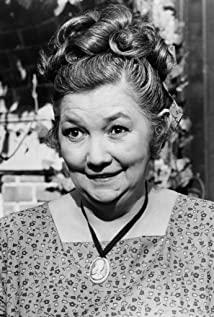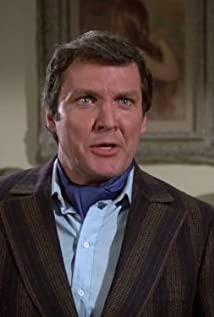The film conflict created by "Rosemary's Baby" is not only due to the superb suspense and detail processing, but also due to the cult of the devil revealed at the end of the film, but also because the director Roman Polanski wants to immerse the audience in paranoid thoughts. Among. Through meticulous research on the characters in the film, from behaviors to quirks, Polanski also gives vitality to every non-material element, thus constructing a very real and highly substituting sense of horror. But this sense of horror is so lacking in stability, because we will torture the existence of supernatural things in the film with great suspicion, and this skepticism does indeed arise in the depths of our hearts, the most real and difficult Fear of fright. Although the film reveals that he is a supernatural horror story at the end, what is more thrilling than the story of an unarmed pregnant woman trying to fight against foreign forces? Polanski's cult masterpiece, completed in 1968, not only awakened the ambivalence of demon and superstition in the social background at that time, but also foreshadowed the paranoia and madness that swept the entire cultural circle in the following decades. The story of Satan’s panic, censorship of film and television dramas, and even the subsequent sublime influx of the political circle is enough to see the impact of this film on the public. It is an intricate and unforgettable thriller, which laid the foundation for the subsequent cultural enthusiasm. Established its foundation and established its unshakable position in the history of film.
To understand why this film caused such a strong reaction, it is important to consider the historical background in which it is located. In the 1960s, the authority of the Catholic Church gradually disappeared due to the rise of other belief systems, and cult ideas like atheism, mysticism, and dark magic, unbridled disenchantment and questioning of the Christian ideal world, led to this long-term suspicion. Cultural suspicion of existing religious ritual forms. This trend has never been more shocking than the bold red letters in the April 1966 issue of Time magazine-"Is God Dead?". Even "Time" magazine can have such a cover, which shows that people were generally anxious about faith at that time. Under the gloom of the Second World War, the United States was caught in the quagmire of the Vietnam War during the Cold War. During the Nixon administration, talks about atheist communists and "theologians" who preached that "God is dead" were rampant, and mainstream cultural values were eroded. Aggression is at stake. And "Rosemary's Baby" is not so much a wake-up call, it is more a mark, marking the fuse of the Satanist cult to public recognition, and inspiring the enthusiasm and firm position of religious groups.
"Rosemary's Baby" is adapted from a novel of the same name published in 1967. The author Ira Levin is a Jewish-born atheist. In the second year after the novel was published, Polanski and the producer Robert Evans of Paramount Pictures adapted it into a movie. Just like Levin's book, Polanski also examines how human desire transcends the moral polarity of good and evil, and how to become a fan of Satanism. The director makes full use of the audience’s fear and sets the background of the cult underworld, but at the same time retains the paranoid complex of trust and distrust, and leaves a positive or negative attitude for every terrible possibility, so that the audience is in the whole process Zhongdu is guessing the relationship between himself and the protagonist, and guessing the rationality of countless world views.
Rosemary Woodhouse, played by Mia Farrow, is a mother who is about to become pregnant but is deeply tortured by a wizarding conspiracy: they will conspiracy to steal babies and use their children’s blood for humans Sacrifice. But before laying the groundwork for witches or such mysterious conspiracies, Polanski spent about an hour to outline his characters and their relationships, quirks, insecurities and desires. Rosemary and her husband Guy (played by John Cassavetes) moved into a Gothic apartment building in New York City, Bramford (the shooting location was in the Central Park West Building in Dakota, which is also John Lennon (John Lennon). ) The place where they were killed in 1980). If you notice Rosemary's dress in the opening scene, the low-saturation bright-toned dress, golden croissant braids, her eyes are charming, innocent, delicate and childlike. She spends a lot of time decorating their new home every day, tiptoes in front of her irritable husband, and has to be taught time and time to learn to accommodate and obey. At the same time, Guy is dreaming of becoming a well-known actor, and he can only travel through some small roles in TV shows and dramas. There are too many things in front of them in life. Their neighbors, the Casevets (the Casevets), Minnie (Ruth Gordon) and Roman (Sidney Blackmer) were very "hospitable". They admired their decorations with great interest and invited Rosemary to dinner. With a friendly attitude, Rosemary and Guy visited their stuffy apartment and tasted Minne's poor cooking skills. At dinner, their discussion about religion and the Pope and Roman speech made Rosemary, who grew up in a Catholic living environment, feel uncomfortable, but Roman said to Rosemary, "You don't need to respect him because he pretends that he is holy. "Although Rosemary expressed her dissatisfaction with the Caswells after dinner, Guy still has the intention to continue visiting, and afterwards often drinks and chats in the next room, smokes and whispers.
The countless details of this film make the image of each character become three-dimensional and full. For example, Rosemary, no matter how sexy and cute she is, she is the product of the patriarchal culture, so it is like a decoration for her husband. As a lonely housewife, her brain is very active and even talking to herself, but when expressing opinions, she is always very docile. Although the husband tries to behave like understanding a sensitive wife, he suppresses his impulses most of the time. This pair of mediocre and charming couples is not only attributable to Mia and John’s handling of the details of each character, but also to the director Polanski’s inclusion of private goods in every dialogue, interspersed with looming plots to promote clues and inspire us to keep asking. , Constantly questioning.
Although the film is based on supernatural topics, the entire scene is very realistic, and even some meaningless things are portrayed in detail. However, it is this blindness that allows us to exclude fluke explanations of supernatural things, and instead focus on the extreme compulsion and extreme paranoia within the characters. Long before "Rose", he directed the film "Cold Blood Horror" in 1965, and after "Rose" he directed the film "Strange Tenants". These three films together constitute the three psychological thrillers of Bird. The songs all take place in an increasingly claustrophobic environment, and the characters in each are afraid of neighbors, noise, and the chronological background of the building itself. In such a suffocating environment, the surrounding walls seem to be gradually compressed, and the inner world of the characters in the film has long been torn apart, doing work in eccentric motion radiating in all directions. These films also break the reliability of the narrative discourse of the central character, especially for Rosemary in the film "Rose." Did she discover the truth? Or prenatal depression? Is it the inner fear? Or is it psychological anxiety and instability?
After Rosemary finished eating the mousse cake gifted by Minne, the dizzy and psychedelic movie scene has been talked about. Because can we completely say that it is a dream? Waveguide constructs the processing of the picture like a realistic dream. Instead of using a soft focus filter, he overexposes the jumbled images, interlaced with the sound around the apartment, and the whole scene seems to permeate Rosemary like a nightmare. In the unconsciousness of flaring teeth and dancing claws, one "true" and one "real" seem to show us two "realities"? Or is it two "dreams"? Or is it a mixture of biathlons? Deck, bed, scaffolding floating on the ceiling of Michelangelo in the Sistine Chapel, naked figures, feathers, wounds, blood, claws, rings, Satan! The images that flow in and out frame by frame are condensed in an effortless way. Nothing has a logical sequence and therefore has no logical meaning. Rosemary himself was puzzled: "This is not a dream! This really happened. !?"
After this ceremony, Rosemary compromised her husband's excuse for necrophilia, accepted the unreasonable request of obstetrician Dr. Sapirstein not to read, and even endured the pain silently for several months. She was manipulated in the attempts of everyone around her, overridden in the arrogance and arrogance of all male power representatives, and it was precisely her passivity that signaled the fate of her child.
Although the real threat of this movie was not revealed until the last scene, Bird was still asking us whether Rosemary was crazy? After giving birth, Rosemary endured her husband’s guilty smile while speculating on everyone’s transparent lies. When she appeared in the apartment of The Castevetes with a kitchen knife for the last time, she found acquaintances, neighbors, and her acquaintances who were well-dressed but weird. husband! They are all standing by the crib with black curtains. At this moment, it was not the unfailing calmness, but the horrified expression on Rosemary's face. She roared, "Its eyes! What did you do to his eyes!" The fear at this moment is so impossible, but actually It was so true, accompanied by the fanatical prayers and screams of these devotees, that the audience in the 1960s thought it was Polanski himself who caught fire and summoned the child of the devil.
In addition to receiving a lot of enthusiastic reviews and incredible box office performance in 1968, the film almost saved the troubled Paramount Pictures company from a financial crisis. At the same time, some scholars even pointed out that this film successfully realized the realization of the image and completed the "predatory conspiracy" of the Satanists. And Anton LaVey, the founder of the Church of Satan, as the religious adviser of this film, did not actually bring any doctrinal spreading effect. After more than ten years of steady development, the church gained approximately 5,000 members in the 1980s. But instead of saying that the church promotes the objectification of Satan, it is better to pursue a kind of mysticism and spiritual escape and escape from the world, and this mood is very sad and reduced to an empty Satanist narrative. Test rhetoric spreads cynical dissatisfaction and extreme pragmatism. Therefore, "Rose" quickly fell into the target of criticism, and the National Catholic Association and the Orthodox League organization both marked the film as a "C" rating or even a "condemned" rating. The root of this kind of protest is that the orthodox Christians (especially fundamentalists) are afraid that the film will show the real situation in excessive detail, which will disturb people's hearts and cause social unrest.
For example, it was the baby boom after World War II. Many protests feared that Rosemary's sexual behavior with Satan would have a bad influence on vulnerable young people, because although Rosemary is an adult woman, her overall appearance has nothing to do with children. Two differences, they condemned it as a satanic ritual involving children and made it pornographic.
But the most chilling aspect of "Rose" is the Manson murder that caused a national sensation in August 1969. The cult of Charles Manson murdered Polanski's wife Sharon Tate, who was eight months pregnant at the time, and five other victims, including Sharon's unborn child. Although the murder itself was not directly connected with Satanism, the media and right-wing Christian groups at the time still linked its case to Rose, and even quoted Tate at the party after the movie was released. "The Devil is beautiful. Most people think he's ugly, but he's not. Most people think he's ugly, but she is not)". They satirize Polanski and Tate's way of spreading Satanism through the media to bring their own scourge, and even imply that Tate's murder is God's punishment for Polanski. This kind of reaction does not come out of nowhere. They come from the specific ideology held by the Christian community, and they firmly believe that Satan's conspiracy threatens the lives of Christians. They condemned "Ross" for rationalizing the crooked principles of Satanism, and taught people how to perform Satan rituals by precepts and deeds. They even believed that film workers had bred evil in the world through Rosemary's belly. So regardless of the public’s fascination with "Rose" or condemnation, this cultural movement has spread to every visible light. Subsequent movies such as Ken Russell's "Ludan's Devil" and Richard Donner's "The Omen" are all boosting. This level of cultural awareness and exaggeration. While critics are constantly calling for direct censorship and protests, movies, games, toys, etc. have all attracted a frenetic wave of superstition worship such as Satanism and a constant torrent of enthusiasm.
In the decades after "Rose" was released, with the support of President Reagan and religious rights, fundamentalist Christians have become a strong political and economic foundation in American culture, and they have quickly begun to organize and form an anti-Satanist campaign. Media movement. At that time, any religious rights and ideological views that could be related to Satanism were considered potentially dangerous and intriguing. This movement has also received a large amount of film and television program production rights and the support of books. For example, the autobiographical book "Michelle Remembers" published in 1980 recorded an adult woman who recalled her child's repressed memory when she became a victim of abuse in a satanic ritual. Similar survivors also showed the "Underground Satan" program on the prime time talk show (The Phil Donahue Show) of the American Broadcasting Corporation (NBC). At the same time, Satanism has become a deeply rooted cultural topic, and any evidence of complicity with Satanism will be wanted and killed.
This is an era of Satan's panic. Belief in Satan’s conspiracy led to growing cultural paranoia, which even reached its peak in the 1980s and 1990s. Under the propaganda of movies and TV, everyone is brainwashed by such conspiracy theories. They deeply believe that conspiracy theories are part of American culture, whether it is the landing of aliens in Roseville, the Illuminati, the Kennedy assassination, and the entire history. Undercurrent of Freemasonry, Satanic conspiracy seems to have become a cultural fashion. Fundamentalists even condemned animation works like the games "Dungeons and Dragons", "Baby Bear", "The Smurfs", and "The Cosmic Giant Seaman" for trying to use an hour and a half of episodes to combine corrupt images and The unholy elements are brought into the home. It wasn't until the philosopher Carl Rascheke lamented in the 1980s that the hysteria of panic about Satan in this era made people so nihilistic, and the resistance to Satanism actually inspired the momentum of the fire. Although the actual scale of Satanists is less than 10,000, this asymmetric scale has long contradicted the fact that Satanism is in full swing. Are these Christians not fanatical? Although they warned of any threats to Satan, young people in the 1960s and 1970s had long chosen an alternative way of life, and this way of life was named cult (cult). It is a social weapon that evokes brainwashing thoughts, and it is also a flame that hides all immoral or Satanic motives. The emergence of people like Charles Manson and Jim Jones will inevitably encourage cults and counter-cultural groups. , Atheism and the fear of authority questioning.
By the mid-1980s, the Satanist panic movement proved to be so successful, not only the spiritual beliefs of politicians, but also the result of their efforts to actively expand their ideological positions. But what needs to be calmed down is that at that time, those who believed that Satan was eating into the hearts of innocent people and blaming the blame on "Rose" should be worthy of attention and questioning. Because of the decline of family unity and the fear of children’s safety, people have an extremely unusual cognitive proliferation of cultural landscapes such as Satanism. Parents of ordinary families are deeply trapped in the ideal of cultural homogeneity and are obsessed with all kinds of child abuse and disappearance. In the social news of children, child molestation, incest, child pornography, and Halloween sadism; the White House government of the Republican Party also joins any black terror that resists Satan’s criminal values. Therefore, "Rose" was directly accused of spreading a certain heretical ideology and was directly subject to censorship, which forced the audience to stay away.
But as for the movie itself, Bird uses a lot of real details and completely throws his private life away from the movie. The reason why we can feel this continuous fear is that this kind of fear is something we have never encountered before, and we have never seen it. This kind of fear that is dominated by the unknown will bring the most shocking psychological collapse. For example, Bird never let the baby appear in front of the camera. He maintains this suspense, lingering doubts about the supernatural to the end, and the ending is only fixed in Rosemary's "maternal" smile. However, it was her surrender at the last moment that many viewers interpreted as her acquiescence to the arrival of evil. This belief is even cursed by Hollywood rumors and even pregnant women give birth. Pregnant women refuse to watch this film because they worry that some kind of image reality will happen, and they worry that the evil in the movie will threaten their children. . Because such threats come so daily, they come from ordinary old couples and wives like Minnie and Roman, and come from senior care centers rather than old houses in deep hospitals. This kind of realism makes everyone get a comprehensive neurological certificate and sensitive. And fragile to defend neighbors, friends, relatives, family and even partners. Especially when Rosemary finished her early pregnancy pain and exclaimed with excitement: "It's still alive!" This is very happy for every mother, but it also reminds us of Colin Clive in 1931. The similar lines published in the film "Frankenstein", which was completed in 1999, are not a sigh of happiness, but a hatred that comes from this association. And this is also the most disturbing moment of the film, because Guy chose to avoid touching her afterwards, and even when Rosemary asked Guy to touch his belly, Guy would instinctively retreat, as if he felt that his wife was pregnant. Is a monster. The whole film begins in the lullaby of Mia Farrow and ends in the lullaby. This lullaby was created by Bird’s long-time partner Krzysztof Komeda. The sound of this song is just like the sound of a violin, like a ghostly haunted echo, long and gloomy, narcotic and painful.
However, it is the torture of human nature in the whole film that makes its influence not limited to horror genre films. The performances of Farrow, Cassavetes, Blackmer and Gordon seemed to compose a tragicomedy about the struggle of a young couple, and Gordon also won the Oscar for Best Supporting Actress for his superb acting skills, which raised the B-level of the film. The secondary status of horror films. And it is the film Bird that paved the way for future cult films, such as "The Exorcist" in 1973, "The Fly" in 1986, "The Silent Lamb" in 1991, and even 2017. "Escape from Deadly Town".
The success of "Rose" is that it avoids the formal production of popular horror films in the same period. It not only has artistic storytelling and the creation of rattling emotions, but also deeply reflects the religious anxiety and gender politics of the times, which improves the production of horror films. Possibility and aesthetics. And undoubtedly, "Rose" will be re-interpreted in our contemporary modern context, because our time is once again staged a much more complicated crisis of faith and confused identity politics, and we will still What kind of cult redemption is derived is another story.
View more about Rosemary's Baby reviews











